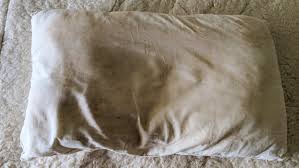When it comes to cleaning the house, most of us focus on the obvious areas – sweeping the floors, wiping down countertops, and cleaning the bathrooms. But what about those hidden spots that are easy to forget? You know, the areas that aren't in plain sight but still collect dirt, dust, and germs? These neglected spots can build up grime over time, making your home feel less fresh.
Let's talk about 8 forgotten spots in your home that need cleaning too, and how often you should be cleaning them. Keeping these areas clean can improve the overall cleanliness and hygiene of your living space.
8 FORGOTTEN SPOTS
Behind and Under the Refrigerator
Let’s be honest, how often do you move your refrigerator to clean behind it? Most of us don’t even think about it until something spills, but the area behind and underneath your fridge can collect a surprising amount of dust, crumbs, and even spilled liquids. If left untouched, this mess can start to smell and may even attract unwanted pests.How often to clean: Every 3 to 6 months. Every few months, take some time to pull your fridge away from the wall. Sweep or vacuum the floor underneath, and give the back of the refrigerator a good wipe-down to remove any dust. While you’re at it, check the fridge coils – cleaning these helps your fridge run more efficiently.
Ceiling Fans
Ceiling fans are great for keeping the air circulating in your home, but they’re also notorious for collecting dust, especially on the blades. The worst part? If you don’t clean them regularly, all that dust gets blown around the room every time you turn the fan on. This can trigger allergies or just make the room feel a little less fresh.How often to clean: Once a month. To clean your ceiling fan, use a microfiber cloth or a special ceiling fan duster to wipe down the blades. If the dust build-up is really thick, you may want to place an old sheet or towel under the fan before you start to avoid making a mess.
Baseboards
Baseboards are one of those things that we all see but rarely think to clean. Over time, they collect dust, dirt, and even hair, especially in homes with pets. Even if your floors are spotless, dusty baseboards can make your home look a little less clean overall.How often to clean: Every 1 to 2 months. Grab a damp cloth and run it along your baseboards to remove any dust and dirt. If they’re extra grimy, you can use a mixture of water and mild detergent to give them a deeper clean.
Light Switches and Door Handles
We touch light switches and door handles multiple times a day, but when was the last time you cleaned them? These high-touch surfaces can easily collect germs and bacteria, especially if you have kids or frequent guests. Regularly cleaning these spots can help prevent the spread of germs in your home.How often to clean: Once a week. It’s a good idea to wipe down light switches and door handles with disinfectant wipes or a cloth soaked in a mild cleaning solution. This only takes a few minutes and can help keep germs at bay.
Air Vents and Ducts
Air vents and ducts are often overlooked when cleaning, but they can become clogged with dust, dirt, and allergens over time. If not cleaned regularly, this can reduce the air quality in your home, making it harder to breathe – especially for people with allergies or asthma.How often to clean: Every 3 to 6 months. To clean your air vents, remove the covers and vacuum the dust from inside the ducts. Wipe down the vent covers before putting them back. For a deeper clean, you might want to hire a professional to clean the ducts thoroughly.
Shower Curtain Liners
We often focus on cleaning the bathroom tiles and sink, but the shower curtain liner can also get pretty gross over time. Soap scum, mildew, and even mold can build up on your liner, which can lead to unpleasant smells and an unsanitary shower.How often to clean: Every month. Toss your plastic or fabric shower curtain liner into the washing machine with some towels and a bit of detergent. If it’s looking too far gone, it’s easy and inexpensive to replace the liner altogether.
Pillows
We wash our bedsheets regularly, but what about the pillows themselves? Pillows can collect dust mites, sweat, and dead skin cells, which can affect your health and the quality of your sleep. If your pillows are never cleaned, they can also become flat and lose their support over time.How often to clean: Every 3 to 6 months. Check the care label on your pillows to see if they can be machine washed. If not, you can air them out in the sun, which helps kill bacteria and refresh them. Consider replacing pillows every 1 to 2 years to keep your bed feeling fresh and comfortable.
Remote Controls
We use remote controls almost every day, but they’re rarely cleaned. Think about it – everyone in the family handles the remote, but it probably doesn’t get wiped down very often. Remote controls can collect germs, dirt, and even food crumbs if you use them while eating.How often to clean: Once a week. Wipe down your remotes with a disinfectant wipe or a cloth dampened with rubbing alcohol to remove dirt and germs. This is especially important during flu season or if someone in the household is sick.
These eight spots are often missed during regular cleaning routines, but keeping them on your radar can make a big difference in the overall cleanliness of your home. By adding these areas to your cleaning schedule, you can ensure your home stays fresh, healthy, and comfortable for you and your family.
If tackling these hidden areas sounds like too much to handle on your own, consider hiring a professional cleaning service. They can take care of these often-forgotten spots and keep your entire home sparkling clean, even in those hard-to-reach places.
Feeling overwhelmed with your busy schedule? Let De Alif Cleaning help your cleaning needs!





















0 Comments